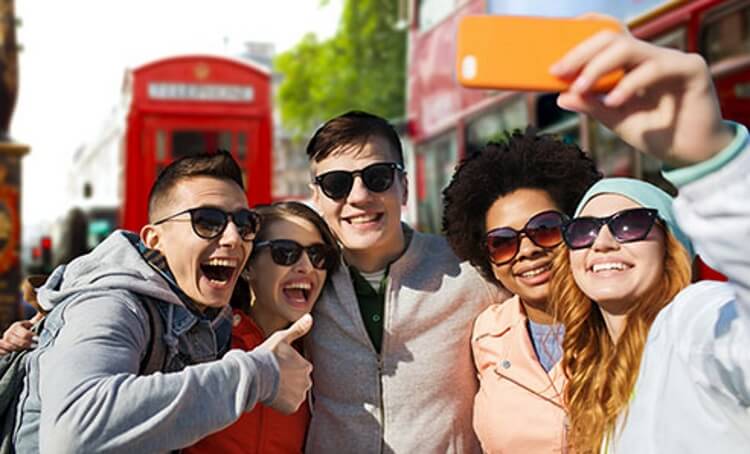Everyone wants to take photographs of their vacations and excursions. Since the invention of the camera, it’s been part of the fun. But with the rise of now-ubiquitous selfie, the game has changed. There is really is a selfie etiquette.
Especially among young people, taking selfies is a way to capture moments with friends, a new hairdo, getting up in the morning, eating lunch, tying one’s shoelaces, etc.
You get what we’re saying.
Every moment, apparently, is a selfie moment. The Facebook pages of the nation, in some quarters, are crowded with images of the person the page belongs to in various stages of “duck face” (lips pursed coquettishly, whether male or female).
So, it’s time for us to talk about selfie etiquette while traveling. Being aware of the rules of the road will make our selfie habits less intrusive and perhaps breed better relationships with the people we find ourselves among.
Eyes on the prize.
A key strategy for educators when discussing with students the fine points about selfie etiquette while traveling is that the trip they’re going on is educational.
It’s not about bragging rights, or Instagram or Facebook likes. It’s about learning. Instilling this in your students is the cornerstone of getting them to put their devices away while you’re visiting sites they’re supposed to be taking something important away from.
You know. Something more important than a photo of them pretending to comb the hair on a bust of George Washington.
Being aware of other people.
Especially in venues where people have paid to come and view antiquities, works of art, or displays, it’s crucial that your students understand that clowning it up in front of a Jackson Pollack, or a Civil War-era uniform is the highest level of unconscious buffoonery imaginable.
Many museums and historical sites are banning selfies, for this very reason. It’s distracting, it’s rude and it detracts from the experience of other visitors.
Respect for history.
Being in the presence of history is exciting. But when that history is one of tragedy, or sacrifice, or communal suffering, a selfie is about the most disrespectful thing anyone can do at the historical site in question.
In a pervasive technological culture, many may feel entitled to pretend that their right to photograph themselves in this way somehow trumps the decorum inspired by sites like the Ground Zero monument in New York City.
That will never be the case.
It’s a pity that teachers often need to play the “bad cop” on tours and trips with their students, but your students are there to learn. You are the teacher and it’s on you to ensure that part of your students’ education enshrines values of respect, decorum and the dignity of the places they’re visiting.
Above all, respect for other people is part of the effort to contain the selfie phenomenon.
If that means quarantining student mobile devices, so be it.
Junior Tours.
Founded by a teacher in 1967, Junior Tours is committed to crafting tailored educational itineraries that put educator objectives first.
Ready to go? Request a sample itinerary and quotation.

